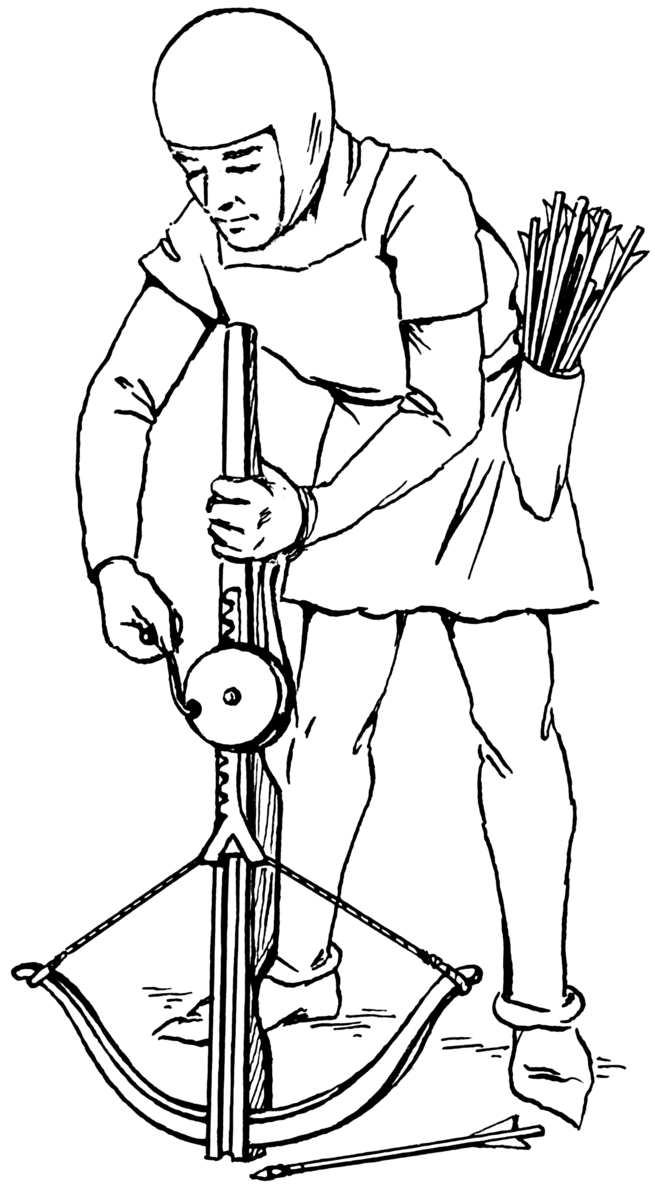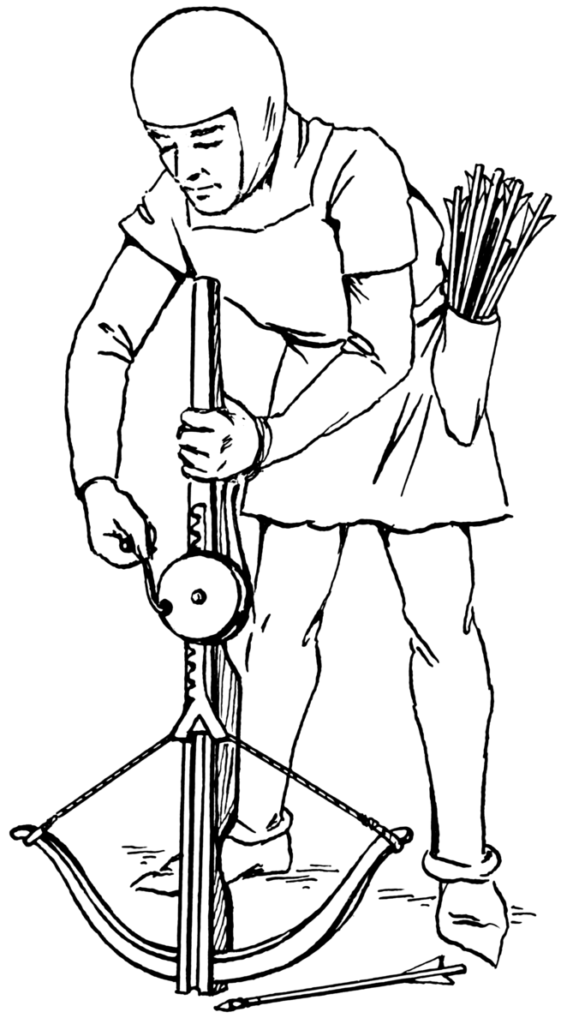
-
Arbalest
The arbalest (also arblast) was a late variation of the crossbow coming into use in Europe during the 12th century. A large weapon, the arbalest had a steel prod (“bow”). Since the arbalest was much larger than earlier crossbows, and because of the greater tensile strength of steel, it had a greater force. However, the greater draw weight was offset by the smaller powerstroke, which limited its potential in fully transferring the energy into the crossbow bolt. The strongest windlass-pulled arbalests could have up to 22 kN (5000 lbf) of force and be accurate up to 100 m. A skilled arbalestier (arbalester) could loose two bolts per minute.
-
Crossbow
A crossbow is a type of elastic ranged weapon in similar principle to a bow, consisting of a bow-like assembly called a prod, mounted horizontally on a main frame called a tiller, which is handheld in a similar fashion to the stock of a long gun. It shoots arrow-like projectiles called bolts or quarrels. The medieval European crossbow was called by many other names including crossbow itself, most of which were derived from the word ballista, an ancient Greek torsion siege engine similar in appearance.Although having the same launch principle, crossbows differ from bows in that a bow’s draw must be maintained manually by the archer pulling the bowstring with fingers, arm and back muscles and holding that same form in order to aim (which demands significant physical strength and stamina), while a crossbow uses a locking mechanism to maintain the draw, limiting the shooter’s exertion to only pulling the string into lock and then releasing the shot via depressing a lever/trigger. This not only enables a crossbowman to handle stronger draw weight, but also hold for longer with significant less physical strain, thus capable of better precision.
Historically, crossbows played a significant role in the warfare of East Asia and Medieval Europe. The earliest crossbows in the world were invented in ancient China and caused a major shift in the role of projectile weaponry. The traditional bow and arrow had long been a specialized weapon that required considerable training, physical strength and expertise to operate with any degree of practical efficiency. In many cultures, archers were considered a separate and superior warrior caste, despite usually being drawn from the common class, as their archery skill-set was essentially trained and strengthened from birth (similar to many horseman cultures) and was impossible to reproduce outside a pre-established cultural tradition, which many nations lacked. In contrast, the crossbow was the first ranged weapon to be simple, cheap and physically undemanding enough to be operated by large numbers of untrained conscript soldiers, thus enabling virtually any nation to field a potent force of crossbowmen with little expense beyond the cost of the weapons themselves.Firearms have largely supplanted crossbows for use against humans. Crossbows are still widely used for competitive shooting sports and hunting, or for relatively silent fire.
-
Arbalest (noun)
A late form of medieval crossbow, having a steel bow.
-
Crossbow (noun)
A mechanised weapon, based on the bow and arrow, that shoots bolts.

